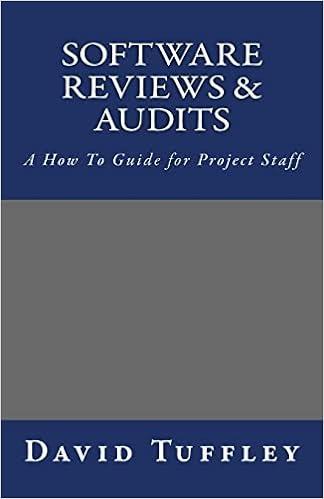Return to question On January 1, 2021, the general ledger of Freedom Fireworks includes the following account balances: Accounts Credit points Accounts Receivable Debit $ 12,500 36,600 153,300 80,300 133,000 Buildings Allowance for Uncollectible Accounts Accumulated Depreciation Accounts Payable Common Stock Retained Earnings Totals $ 3,100 10,900 32,000 213,000 156,700 $415, 700 $415.700 During January 2021, the following transactions occur: January 1 Borrow $113,000 from Captive Credit Corporation. The installment note bears interest at 68 annually and matures in 5 years. Payments of $2,185 are required at the end of each month for 60 months. January 4 Receive $32,300 from customers an accounts receivable. January 10 Pay cash on accounts payable, $24,000. January 15 Pay cash for salaries, $30,200. January 30 Pirework sales for the month total $201,200. Sales include $66, 300 for cash and $134,900 on account. The cost of the units sold is $119,000. January 31 Pay the first monthly installment of $2,185 related to the $113,000 borrowed on January 1. Round your interest calculation to the nearest dollar. Return to question ne TonW o mation is available on January 31, 202 points a. Depreciation on the building for the month of January is calculated using the straight-line method. At the time the building was purchased, the company estimated a service life of 10 years and a residual value of $26.800 b. The company estimates future uncollectible accounts. The company determines $4,300 of accounts receivable on January 31 are past due, and 50% of these accounts are estimated to be uncollectible. The remaining accounts receivable on January 31 are not past due, and 2% of these accounts are estimated to be uncollectible. (Hint: Use the January 31 accounts receivable balance calculated in the general ledger.) c. Unpaid salaries at the end of January are $27,400. d. Accrued income taxes at the end of January are $9.300 e. $20,079 of the long-term note payable balance will be paid over the next year. Answer is not complete. Requirement General Journal General Ledger Trial Balance Income Statement Balance Sheet Analysis 1. Record each of the transactions listed above in the General Journal' tab (these are shown as items 1 - 7) assuming a FIFO perpetual inventory system. The transaction on January 30 requires two entries: one to record sales revenue and one to record cost of goods sold, Review the General Ledger and the 'Trial Balance' tabs to see the effect of the transactions on the account balances. 2. Record adjusting entries on January 31, in the General Journal tab (these are shown as Items 8-12). 3. Review the adjusted 'Trial Balance as of January 31, 2021, in the 'Trial Balance' tab. 4. Prepare a multiple-step income statement for the period ended January 31, 2021, in the "Income Statement tab. 5. Prepare a classified balance sheet as of January 31, 2021, in the 'Balance Sheet' tab. 6. Record the closing entries in the General Journal' tab (these are shown as items 13 and 14). 7. Using the information from the requirements above, complete the 'Analysis' tab. Return to question NO Date Account Title Credit Debit 113,000 Jan 01 Cash Notes Payable (Long-term) 113,000 points Jan 04 32,300 Cash Accounts receivable 32,300 Jan 10 Accounts payable 24,000 Cash 24,000 Jan 15 30,200 Salaries expense Cash 30,200 Jan 30 Cash Accounts receivable 66,300 134,900 Sales revenue 201,200 Jan 30 119,000 Cost of goods sold Inventory 119,000 Return to ques Jan 31 Interest expense Notes Payable (Long-term) Cash points Jan 31 Depreciation expense Accumulated depreciation 21 an Bad debt expense Allowance for uncollectible accounts 101 Jan 31 Salaries expense Salaries payable 1 Income tax expense Income tax payable Jan 31 Notes Payable (Long-term) Notes Payable (Current) Jan 31 Sales revenue Retained earnings Return to question Jan 31 Income tax expense Income tax payable 12 Jan 31 15 points Notes Payable (Long-term) Notes Payable (Current) Jan 31 Sales revenue Retained earnings OOOOOOOOOOOOO Jan 31 Retained earnings Cost of goods sold Salaries expense Bad debt expense Depreciation expense Interest expense Income tax expense Return to question Calculate the ratios to the nearest 1 decimal place. Analyze the following for Freedom Fireworks: (a) Calculate the debt to equity ratio. If the average debt to equity ratio for the industry is 1, is Freedom Fireworks more or less leveraged than other companies in the same industry? points The debt to equity ratio is: is the company more or less leveraged than other companies? (b) Calculate the times interest eamed ratio. If the average times interest earned ratio for the industry is 20 times, is the company more or loss able to meet interest payments than other companies in the same industry? The times interest earned ratio is: Is the company more or less able to meet interest payments than other companies? (c) Based on the ratios calculated in (a) and (b), would Freedom Fireworks be more likely to receive a higher or lower Interest rate than the average borrowing rate in the industry?












